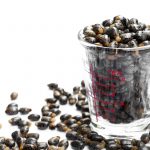Treating Infertility: A Homeopathic Approach
Natalie Ham, ND
Infertility is a common and emotionally exhausting problem for many couples. In my women’s health-based practice, I encounter infertility on a regular basis. I usually see the female partner; however, the male’s health should always be addressed as well, since men and women are equally likely to be the causative factor in infertility.1
Although I use a variety of treatment tools, because of my training in homeopathy, all of my patients receive a homeopathic remedy. I have found the use of homeopathy to treat infertility to be extremely valuable, and studies have also shown it to be effective for the treatment of both male2 and female3 infertility. Good lifestyle choices, however, are just as important as a good prescription. Excess alcohol, smoking, stress, and weight problems are all causative factors in infertility,4 so should be addressed as well. Some of the most common causes of female infertility include: tubal and pelvic diseases, sexually-transmitted infections, ovulation dysfunction, endometriosis, low egg count, structural abnormalities, autoimmune diseases, genetic defects, and environmental exposure to toxins.1,5
Case Study 1
One of the most common causes of infertility is polycystic ovarian syndrome (PCOS), which is also one of the most common disorders that I see in my practice. Allie was 27 years old when she consulted me for irregular cycles and depression. Her husband and she had not been able to conceive after more than a year of trying. Her intake revealed irregular periods, often skipping months at a time, acne, excess hair growth on her abdomen and chin, an elevated luteinizing hormone (LH) compared to follicle-stimulating hormone (FSH), and elevated testosterone. A pelvic ultrasound revealed a ring of pearls around both ovaries. She easily fit the criteria for diagnosis of PCOS. When I explained this to her, she was relieved to finally have an answer that explained her symptoms.
When taking a homeopathic case for infertility, I focus on the symptoms that represent the reproductive system’s imbalance. Allie simply had light, irregular cycles with limited symptoms. However, her depression became more severe before and during her period, which was the strongest evidence of imbalance in her case. Allie’s depression consisted of easily triggered anger, as well as a consistent feeling that she was not good enough. The inability to have children left her feeling “broken.” During her period she would isolate herself, and even though she never actively felt suicidal, at times she imagined it would be easier if she was not around. After her period started, which confirmed she was not pregnant, she would feel intense guilt and that the couple’s infertility was her fault. She expressed that she felt like a failure and very alone in this struggle.
The remedy I prescribed was Aurum metallicum. Allie fit the depression of Aurum very well: feeling alone, self-reproaching, thoughts of death, feeling she had let others down, guilt and anger. Aurum also has a less-well known affinity for infertility and amenorrhea. Within the first month of treatment, she noticed a drastic improvement in the depression and anger, and her period came on time. Over the next several months, her periods became consistent, her acne and hair growth decreased, and her testosterone normalized. After almost a year of consistent treatment, she called me, ecstatic that was pregnant! She was so amazed by her results, she contemplated going to naturopathic medical school. However, after the birth of her first child, she quickly became pregnant with her second, and had to put that thought on hold. She has just given birth to her second child, and has 2 children under 2 years old.
Case Study 2
Another common cause of infertility is hypothyroidism. My next case presented as a hypothyroid case, but it may have not actually been the hypothyroidism that was causing her infertility. Megan, a 29-year-old woman, had been diagnosed while trying to conceive 3 years prior. Unfortunately, she could not tolerate the thyroid medication. She would become anxious and agitated, even on several different dosages. Megan stopped the medication and eventually adopted a beautiful little girl. When she came to see me for a different approach, I explained that at times when using homeopathy, thyroid medications can be reduced or even removed. Before implementing any additional treatments beyond homeopathy, I wanted to get current thyroid labs.
I took her homeopathic case and was happy that her remedy seemed clear. Her symptoms consisted of fatigue in the afternoon between 3 and 5 PM, a low mood, feeling disconnected from her family, and dry cracked skin on the backs of her hands and heels. When she could get away and be active, such as going for a run, she would feel much better. Her periods were mostly normal, but would sometimes be late.
Because of these symptoms and her history of infertility, I prescribed Sepia. Since Sepia is the most commonly successful remedy that I use to treat infertility, I asked her if conceiving, now that she had a toddler, was still desired. She agreed that it was, but without much conviction. Five weeks later I received an email from Megan. She first felt the remedy was not working; she was extremely emotional and her period was late. Then she reported that she could hear my voice asking about the possibility of pregnancy, and decided to take a home pregnancy test. It was positive! She had not gotten her labs done at this point, and so she immediately got them drawn. They showed that she was still hypothyroid; her TSH was 5.43. Because normal thyroid function is essential for a healthy pregnancy, I swiftly placed her on 1 grain of USP thyroid, which she luckily tolerated.
Megan is currently in her 7th month of pregnancy, and she has continued to take increasing potencies of Sepia to help with nausea and fatigue of pregnancy. She is doing very well. Although the hypothyroidism was originally thought to be the cause of her infertility, perhaps there was an unexplained cause of Megan’s infertility, since she became pregnant while still hypothyroid. Unexplained infertility is another common cause that constitutes up to 20% of infertility patients.1
Case Study 3
Another cause of infertility is endometriosis, which is what my long-standing patient, Sara, had been diagnosed with. I began treating Sara for infertility when she was 24 years old. She unfortunately had the trifecta of infertility: hypothyroidism, endometriosis, and PCOS. Her endometriosis, diagnosed several years earlier via laparoscopy, was severe. She had consistent pain, much of it in her right ovary, which had been completely enveloped in an endometrial cyst. Sara had changed her diet to a healthy vegetarian diet and was on thyroid medication and a variety of supplements when I saw her. Within several months of adding homeopathic treatment, her elevated LH and testosterone levels had decreased and her endometriosis pain had significantly improved.
Over time, her irritability and anxiety alleviated and her cycles regulated. Unfortunately, she was still unable to conceive. Her gynecologist ordered another laparoscopy, which revealed that the endometriosis had spread throughout her abdominal cavity. Sara decided to go through an extensive surgery to remove the endometriosis, the right ovary, and part of the left one. She was devastated, as was I, that we had spent years effectively balancing her hormones and mood, and alleviating most of her pain, only to find that the endometriosis had been thriving all along. I wondered if it had gotten this bad before homeopathic treatment and we had stalled its progression, or whether it was actively getting worse even though she felt better?
After the surgery, Sara’s surgeon placed her on birth control pills to prevent the recurrence of the endometriosis. Sara panicked. She was extremely sensitive to the mood-altering effects of birth control pills. However, with the fear of the surgery fresh in her mind, she decided to try them. After 4 months, Sara was in distress. The same symptoms had returned and she simply could not tolerate them. We made the decision together to treat aggressively with naturopathic tools to prevent the recurrence of the endometriosis, as well as adding a homoeopathic remedy that matched the new symptoms of her menstrual cycle after the surgery. In order to do this, I tightened up her diet even further by eliminating all dairy to decrease inflammation. I also placed her on diindolylmethane (DIM), liver support, flax seeds, and castor oil packs to help her body metabolize excess estrogen, as well as antioxidants to reduce oxidative stress; both of these are contributing factors in endometriosis.6,7
Taking her homeopathic case, I found that she now had left ovary pain, despite having the endometrial tissue removed. The pain was sharp, extended to the right, worsened prior to her cycle, and lessened as she’d start to bleed. Her mood followed the same pattern. This collection of symptoms fit the remedy Lachesis, which I prescribed for her to take daily. After 3 months on this regimen, she called and reported that she was pregnant! She was shocked that with only a sliver of 1 ovary remaining, she was able to conceive. Sara is currently in the 2nd trimester of a healthy pregnancy. This case demonstrates the use of integrative medicine to treat infertility related to endometriosis. It is difficult to determine what treatment was most effective. Perhaps it was all of them, working in conjunction with Sara’s continued hope, that finally allowed her to conceive.
Closing Comments
Helping my patients to conceive naturally is an amazingly rewarding experience. By giving a patient the correct homeopathic remedy, we can rebalance an imbalanced vital force that may lead to infertility. Without a strong vital force, one may not detoxify their environment correctly, which can add to total body burden. This in turn may stress the liver and contribute to imbalanced hormones, which may then lead to infertility. We can address all of these causes, but addressing the dysfunction of the vital force with homeopathy creates a domino effect of healing. The correct use of homeopathic medicine not only alleviates patients of their disease, but also balances their entire system. This allows patients, as Hahnemann says, to “freely use this healthy living instrument to reach the lofty goal of human existence.”8
 Natalie Ham, ND, is a naturopathic doctor that focuses on the treatment of women’s health with homeopathy. She graduated from Southwest College of Naturopathic Medicine (SCNM) in Tempe, AZ, in 2007. After acceptance into the residency program at SCNM, she was given the opportunity of a second-year, homeopathy-based residency by Dr Stephen Messer and sponsored by Standard Homeopathics. She previously taught homeopathy, supervised student shifts, and was involved in research at SCNM. She recently opened her own practice, Nourish Natural Medical Center, in Tempe, AZ. She is happily married and lives in Chandler, AZ, with her 2 dogs.
Natalie Ham, ND, is a naturopathic doctor that focuses on the treatment of women’s health with homeopathy. She graduated from Southwest College of Naturopathic Medicine (SCNM) in Tempe, AZ, in 2007. After acceptance into the residency program at SCNM, she was given the opportunity of a second-year, homeopathy-based residency by Dr Stephen Messer and sponsored by Standard Homeopathics. She previously taught homeopathy, supervised student shifts, and was involved in research at SCNM. She recently opened her own practice, Nourish Natural Medical Center, in Tempe, AZ. She is happily married and lives in Chandler, AZ, with her 2 dogs.
References
- Schattman, G. Infertility. Updated April 27, 2015. Healthy Women Web site. http://www.healthywomen.org/condition/infertility. Accessed October 22, 2015.
- Gerhard I, Wallis E. Individualized homeopathic therapy for male infertility. 2002;91(3):133-144.
- Gerhard I, Keller C, Monga, B. Homeopathic treatment for female infertility. TW Gynakologie 6. 1993;6:337-344.
- Sharma R, Biedenharn K, Fedor J, Agarwal A. Lifestyle factors and reproductive health: taking control of your fertility. Reprod Biol Endrocrinol. 2013;11:66.
- Mayo Clinic Staff. Diseases and conditions: Female infertility. July 16, 2013. Mayo Clinic Web site. http://www.mayoclinic.org/diseases-conditions/female-infertility/basics/causes/con-20033618. Accessed October 31, 2015.
- Gupta S, Agarwal A, Krajcir N, Alvarez J. Role of oxidative stress in endometriosis. Reprod Biomed Online. 2006;13(1):126-134.
- Reviewed by Eisenberg E, Chahine EB. Last updated December 5, 2014. Office of Womens Health Web site.http://www.womenshealth.gov/publications/our-publications/fact-sheet/endometriosis.html. Accessed October 31,2015.
- Hahnemann S. Organon of Medicine. Los Angeles, CA: J P Tarcher, Inc; 1982.










